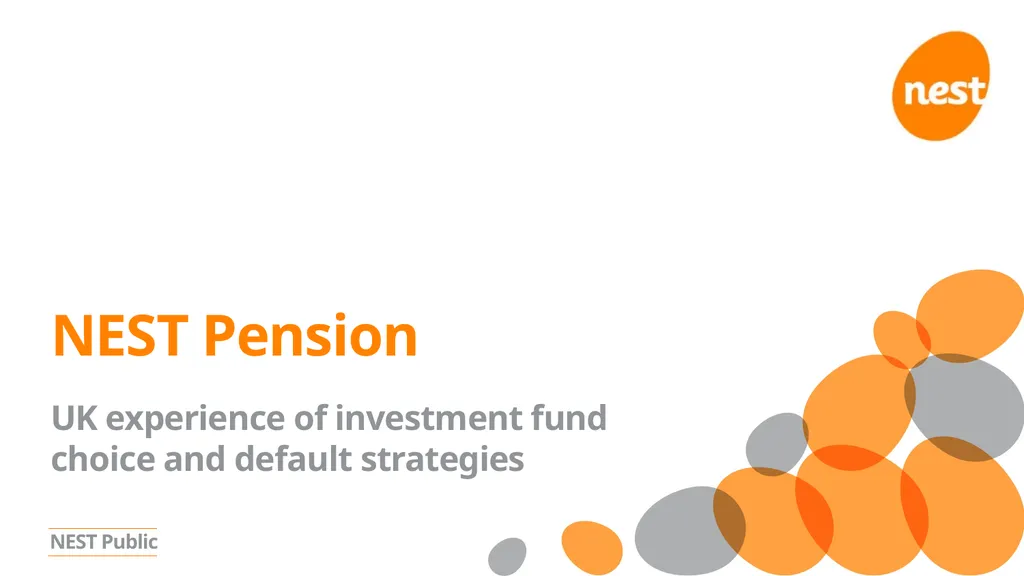NEST Pension UK experience of investment fund
Author : min-jolicoeur | Published Date : 2025-05-14
Description: NEST Pension UK experience of investment fund choice and default strategies 2 Workplace pension reforms Whats changed Before auto enrolment Saving was a minority sport After auto enrolment Saving is the norm 442000 3 NEST key
Presentation Embed Code
Download Presentation
Download
Presentation The PPT/PDF document
"NEST Pension UK experience of investment fund" is the property of its rightful owner.
Permission is granted to download and print the materials on this website for personal, non-commercial use only,
and to display it on your personal computer provided you do not modify the materials and that you retain all
copyright notices contained in the materials. By downloading content from our website, you accept the terms of
this agreement.
Transcript:NEST Pension UK experience of investment fund:
NEST Pension UK experience of investment fund choice and default strategies 2 Workplace pension reforms What’s changed? Before auto enrolment Saving was a ‘minority sport’ After auto enrolment Saving is the norm 442,000+ 3 NEST key statistics Employers Alternative fund choices – supporting decisions 4 NEST Pre-retirement Fund NEST Lower Growth Fund NEST Higher Risk Fund diversified lifestyled low cost NEST Sharia Fund low cost NEST Ethical Fund diversified dynamic lifecycled How NEST delivers its default stratgey Efficient delivery through single year target date funds 5 Wide diversification – risk spread across different asset classes Clear objectives and risk budgets In-house expertise to blend funds from leading fund managers Default fund usage and alternative fund options 82% is average percentage of membership invested in the default fund in the UK - DC Pension Plans in the UK; An Analysis, 2017; Pensions Insight & JP Morgan Asset Management Default fund usage and alternative fund options 99.6% of NEST members are in the default NEST Retirement Date Funds range Data at end of July 2017 Demand side Low financial literacy and capability of long term savings vehicles (lower income highly sophisticated short term budgeters) Procrastination – ongoing nature of investments Naive diversification Little understanding of fees and charges (even for well educated) Brand recognition dominates decisions 401(k) plans in USA - The Efficiency of Sponsor and Participant Portfolio Choices in 401(k) Plans, 2009; Tang, Mitchell, Mottola, Utkus Supply side Complex: multiplicity of products – is there genuine choice? Charges: charges during accumulation are high and vary widely across providers Intermediation - Financial advice: availability, cost European guidance on fund risk categorisation - Note on CESR’s recommendation for the calculation of synthetic risk reward indicator, Investment Management Association (now the Investment Association) UK; 2010 What sort of choice? Do normal rules of supply and demand work? Asymmetry of information Mis-alignment of incentives / principle agent problems ‘There are three sources of market failure in superannuation: member inertia and disengagement; product complexity and low consumer financial literacy; and conflicted remuneration structures within the financial planning industry’ (Australia Industry Super Network 2010 – Cooper review) Outcomes for members and wider implication for public policy and markets Less confidence in system (mis-selling scandals in UK) Lower savings rates leading to lower pots, more reliance on the state High charges – capital spent on marketing and acquisition Limited innovation Inefficient allocation of capital to economy – insufficient














